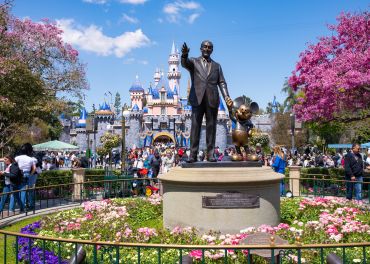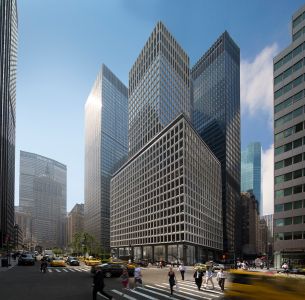Last week we traveled along the southern portion of the Amtrak Northeast Corridor, taking in Washington, D.C.: Baltimore; Wilmington, Del.; Philadelphia and New Jersey before arriving back home in New York City. Now it’s time to hit the rails again and finish the journey! As I stroll from my Hell’s Kitchen neighborhood to meet up with you at the Krispy Kreme in Penn Station (one benefit of this dated transit hub), I reflect on all the changes this part of Manhattan is seeing today.
While the entire island of Manhattan seems to be booming, many of the cranes that dot the landscape are working on residential buildings containing multimillion-dollar apartments.
Looking to the south, though, we can see the office market growing, too—Hudson Yards in the foreground and the World Trade Center in the distance. The overall Manhattan availability rate remains a bit elevated at 12.7 percent (with a true vacancy rate of 7.8 percent), but tenants are intrigued by the big floor plates and green technology that allow for more employees in less space and that drive energy cost savings. Come back in 10 years; I’m quite sure Penn Station/Times Square South/Hudson Yards will be one of the “it” neighborhoods (although aren’t all of Manhattan’s at this point?).
So we settle in with coffee and a few doughnuts (okay, maybe a dozen; it’s a long trip) as the train pulls out. The first stop, Stamford, Conn., comes up in just 43 minutes. As we start slowing through Greenwich, we take a quick peek at this boutique submarket. Though the greater area has a vacancy rate above 20 percent, the village near the train station remains tight with hedge funds. Pulling into Stamford proper, the skyline looks to be expanding, especially south of the station, thanks to the Harbor Point mixed-use development. Even so, the city’s vacancy rate remains north of 30 percent, with financial services still being the major industry, though there are other employers lurking about these days, such as Starwood (STWD) Hotels and NBC Sports.
Off we trek, along the Long Island Sound, past New Haven and Yale University and out into the country. After what seems to be a long ride (done with the doughnuts and thinking about lunch), we pull into what I believe is a city that tends to get short shrift: Providence. Though not a big office market (12 million square feet), it is doing pretty darn well, with a vacancy rate of just 8.7 percent and a very inexpensive asking rent of $23.42 per square foot. We’ll take some time to explore Brown and the Rhode Island School of Design and hop a later train.
We’re back on board and nearing our final stop: Boston. As the corridor’s third largest central-business district office market with 61.6 million square feet, Boston has a mixed-use employment base that’s reflected in its vacancy rate of just 10 percent. Absorption, in fact, has been the healthiest of any city along the corridor, at a positive 619,000 square feet year to date. Pricing, meanwhile, is in line with that of the corridor’s southern anchor city of Washington, D.C., at $46.70 per square feet.
The seaport and Cambridge submarkets are the “wicked awesome” parts of town these days with both areas constructing more innovation and lab space. And have you ever seen so many Dunkin’ Donuts in your life? Remember, I like doughnuts, so I might stay here a while. Let’s go meet some folks in the South End and get the scoop on what new tech or biomed firm is the one to watch!


